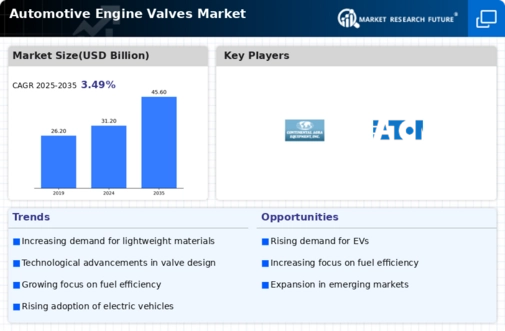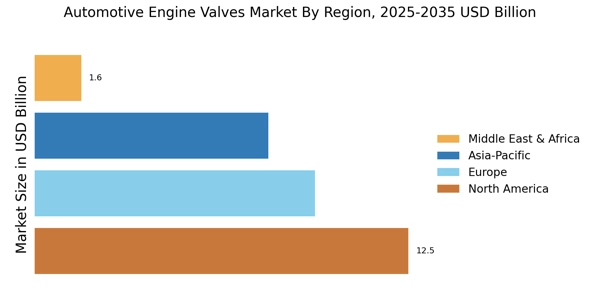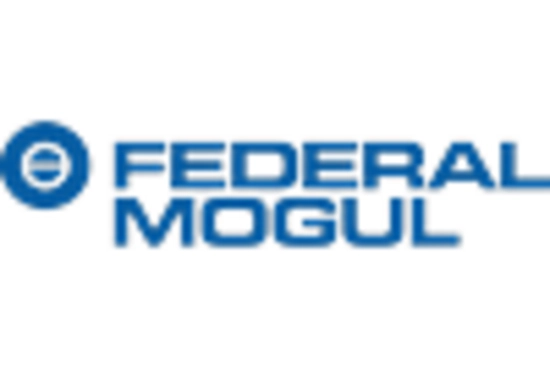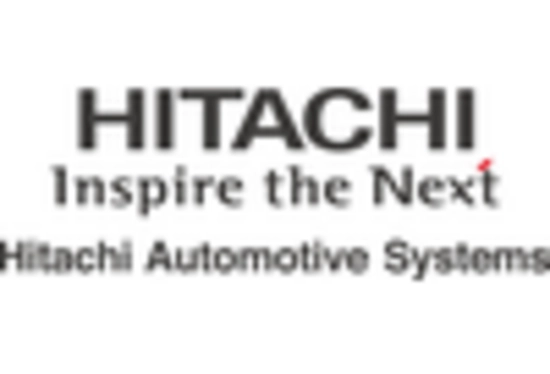Increasing Demand for Fuel Efficiency
The Automotive Engine Valves Market is experiencing a notable surge in demand for fuel-efficient vehicles. As consumers become more environmentally conscious, manufacturers are compelled to innovate and produce engines that optimize fuel consumption. This trend is reflected in the growing adoption of advanced engine technologies, which often incorporate specialized valves designed to enhance combustion efficiency. According to recent data, the market for fuel-efficient vehicles is projected to grow at a compound annual growth rate of approximately 5% over the next few years. Consequently, the Automotive Engine Valves Market is likely to benefit from this shift, as manufacturers seek to develop valves that support these advanced engine designs.
Rising Popularity of Electric Vehicles
The Automotive Engine Valves Market is also being shaped by the rising popularity of electric vehicles (EVs). While traditional internal combustion engines have dominated the market, the shift towards EVs is prompting manufacturers to rethink their engine designs and components. Although electric vehicles do not utilize traditional engine valves, the transition may lead to innovations in hybrid technologies that still require advanced valve systems. As the market for EVs continues to expand, the Automotive Engine Valves Market may witness a transformation in product offerings, focusing on components that support hybrid systems and enhance overall vehicle efficiency.
Growth in Automotive Production and Sales
The Automotive Engine Valves Market is benefiting from the overall growth in automotive production and sales. As economies recover and consumer confidence rises, the demand for new vehicles is increasing, which in turn drives the need for engine components, including valves. Recent statistics indicate that global automotive production is expected to reach over 100 million units annually by 2026. This growth presents a substantial opportunity for the Automotive Engine Valves Market, as manufacturers will require a steady supply of high-quality valves to meet the demands of an expanding vehicle market.
Regulatory Pressure for Emission Reductions
The Automotive Engine Valves Market is significantly influenced by stringent regulations aimed at reducing vehicular emissions. Governments worldwide are implementing more rigorous standards to combat air pollution, which compels automotive manufacturers to adopt cleaner technologies. This regulatory environment drives the demand for advanced engine valves that can facilitate better exhaust management and lower emissions. For instance, the introduction of Euro 6 standards in Europe has led to a marked increase in the adoption of technologies that improve engine performance while minimizing environmental impact. As a result, the Automotive Engine Valves Market is likely to see a rise in the development of valves that meet these evolving regulatory requirements.
Technological Advancements in Engine Design
The Automotive Engine Valves Market is poised for growth due to rapid technological advancements in engine design. Innovations such as variable valve timing and direct fuel injection are becoming increasingly prevalent, necessitating the development of specialized valves that can accommodate these technologies. These advancements not only enhance engine performance but also contribute to improved fuel efficiency and reduced emissions. Market data indicates that the integration of such technologies is expected to increase engine efficiency by up to 20%. Consequently, the Automotive Engine Valves Market is likely to experience heightened demand for valves that support these cutting-edge engine designs.


















Leave a Comment